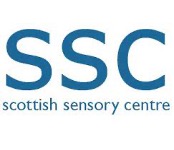Thank you to Ian from NDCS for this update.
“An executive summary of a project on the early auditory experiences of deaf toddlers can be found online at: https://blogs.ucl.ac.uk/baby-soundscapes/results/
This is a project led by Dr Hannah Cooper at UCL Ear Institute, and funded by NDCS. It sought to explore the early auditory experiences of deaf toddlers and identify if/when radio aids might be helpful, whilst still being mindful of other environmental sounds that might be important for deaf children to access.
Here are their recommendations:
- Professionals should take into account the full sound environment of deaf children under 18 months of age when considering and recommending technologies to parents. This includes thinking about noises in the environment which deaf children may not have access to, even with their hearing aids/cochlear implants.
- Radio aids will be beneficial for deaf children under 18 months of age provided that there is clear guidance for their use in differing contexts and situations, and which is tailored to individual families’ needs. This study has shown that deaf children of this age are in noisy situations for about a third of their day and, given the known limitations of hearing aids and cochlear implants, they will not be receiving adequate access to the speech signal during this time without a radio aid. However, their parents change the environment to enable easier listening for their deaf young children, particularly at home. Therefore, a radio aid will be needed in some environments but not others. Professionals should work together with parents to analyse and understand their child’s environment and identify when a radio aid will be useful.
- Further research should identify the finer requirements for the use of radio aids for access to both speech and the meaningful sound environment for deaf children under 18 months of age. Innovative use of radio aid technology, potentially in conjunction with other assistive devices, needs to be explored for this age group in order for young deaf children to have access to a rich sound environment which we know to be an important motivator for development.”
A full report is due later in the year.



